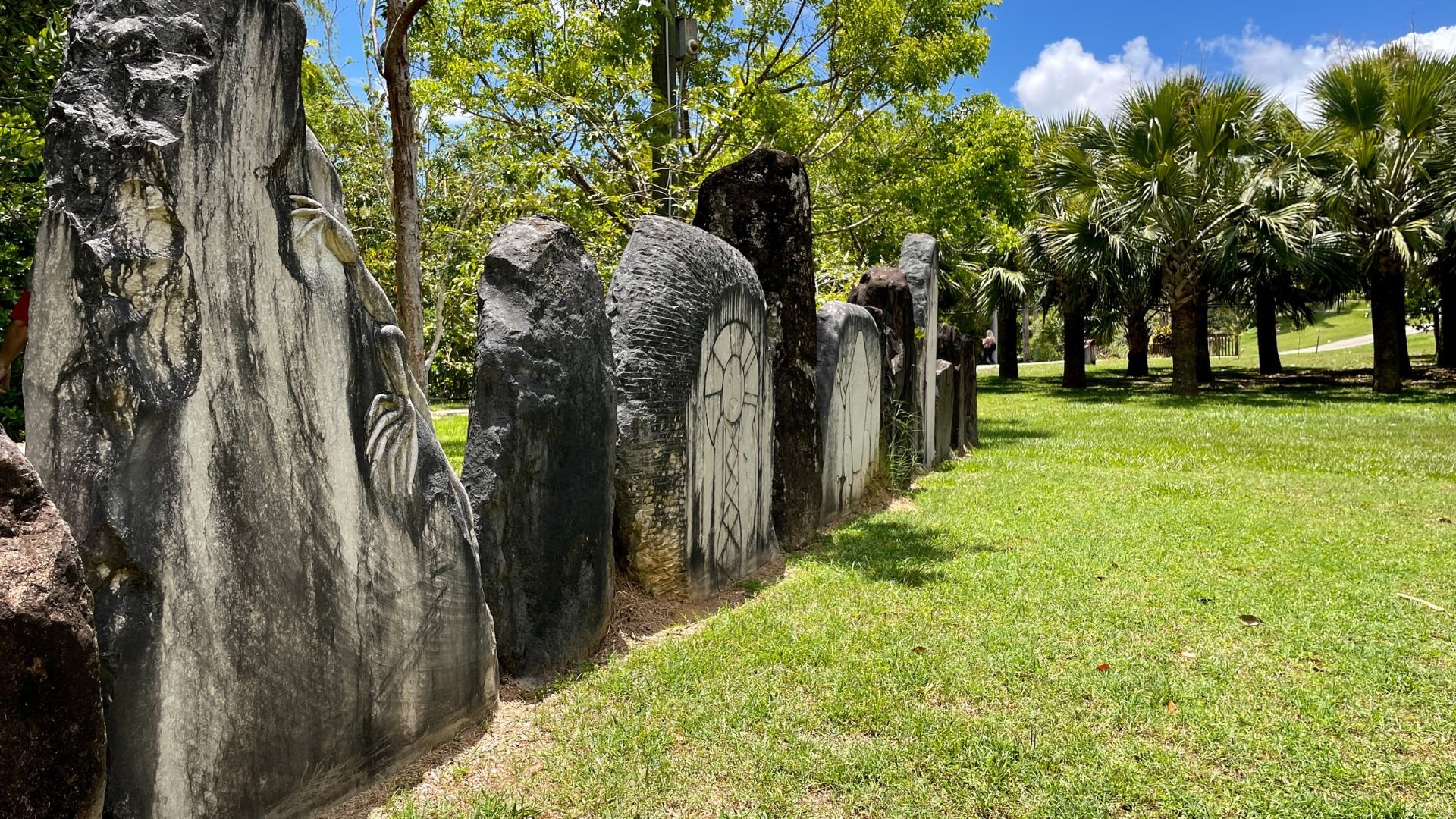The Caguas Botanical Garden in Puerto Rico
Watch Now On YouTube
Located about 30 minutes away from San Juan and nestled in a valley between mountains you will find the Jardín Botanico y Cultural William Miranda Marín, one of the few botanical gardens in Puerto Rico. This garden is special not only because it is full of indigenous plants and animals, but also because it is a historical site where our indigeous taino, african and spanish ancestors converged.
Entrance
The Caguas Botanical Garden is currently open from 10AM - 3PM Wednesday through Friday and from 10AM - 4PM on Saturday and Sunday. Their entrance fee is currently $5 for anyone over 12 years old and $3 for kids form 2 to 12 years old. If you’re looking to walk around the 60 acre Jardín Botánico de Caguas on your own, you won’t need to make a reservation before arriving, but if you want to truly learn about the history, culture and natural resources in the garden I highly suggest coordinating a free guided tour during your visit by calling 787-653-0470 or 787-653-0469.
During our visit we were guided by Hector, a fantastic and knowledgeable tour guide that showed us all the hidden details around the garden. Our first stop during our tour of the Jardín Botanico de Caguas was the archeological site or el Yacimiento. You see, originally the area where the Caguas Botanical Garden is currently located was going to be developed into a residential area similar to the one’s surrounding it. But, during the initial terrain analysis and study, students discovered an indigenous burial site and other artifacts belonging to Puerto Rico’s indigenous civilizations. After this discovery, the construction was halted, and plans were later proposed to turn this area into a park for everybody’s enjoyment.
After learning of the Cagua’s Botanical Garden’s origin story, we headed over to the Floral and Ancestral African Grove where we were surrounded by the beautiful flamboyan trees and other colorful plants. I would suggest that if you want to experience this beautiful landscape, you should visit during the summer months, specifically during June and July which is when the flamboyan trees bloom. Here we also marveled at the Osaín sculpture that taught us about our African ancestors and the impact they had in our language, cooking and culture. Make sure to spend some time to look for all the hidden details and symbolisms within the sculpture that artistically recount the history, bravery and sacrifices that our African ancestors made.
ANCESTRAL AFRICAN GROVE
Next, we headed over to the Ancestral Taíno Grove, an area that depicts what an indigenous taíno settlement looked like. Here our first stop was the Conuco, a traditional community garden where root crops such as yuca and other plants were grown and harvested. Right next to the Conuco you’ll find the Batey, a type of plaza and sacred space for the taíno community where they would carry out celebrations, interact socially and play the ball game called Batú. The batey is characterized by its large rocks that delimit the ceremonial area and which are inscribed with petroglyphs or ancient markings that represent different aspects of the taino culture and their surroundings. Although this batey and these petroglyphs are replicas, you can carefully walk down to the river right next to this area and try to find authentic taíno petroglyphs inscribed on the rocks in the riverbed.
ANCESTRAL TAÍNO GROVE
And, while you’re here, you might want to head over to the hanging bridge that crosses the river and which offers beautiful views of the surrounding area. Crossing this bridge leads you straight to the Casa Jibara. A jibaro is a term used during the 1800s to 1900s to refer to the people who lived deep in the mountains of Puerto Rico and who dedicated their lives mostly to farming. The Casa Jibara is a replica of a house where the jibaros would live and represents their rustic lifestyle. Here you will see many relics and get a sense of the jibaro culture, traditions and customs, which form a vital role to what the Puertorrican culture is today.
CASA JÍBARA
After visiting the Casa Jibara, you will most definitely want to pass by the stand out feature of this botanical garden, the grand lake. This artificial lake is absolutely stunning and here you’ll be able to admire the humongous fish and turtles as well as walk over to the nearby ruins of the San Jose sugar mill. This sugar mill was established by spanish settlers and operated during the 1800s and the beginning of the 1900s. In the nearby area you will also find different types of machinery such as various mills, boilers, chimneys and even train tracks used to transport all types of products made with sugar cane such as molasses and rum.
Book a Flight to Puerto Rico!
HACIENDA SAN JOSÉ SUGAR MILL
After this I highly suggest you pass by the small Centro Indigena museum right next to the aquatic garden where you’ll be able to see authentic indigenous artifacts found within and outside the botanical garden such as the sacred stone called a Cemi that represent taino deities, the Yuke which is a wooden or stone belt used to play in the Batey, and even the skeletal remains of an indigenous taíno found within the Jardín Botánico de Caguas.
SALA PRECOLOMBINA
And finally, after walking all day in the sun you might want to head over to the concession stand where they sell traditional puertorrican street food and other refreshments.
And that’s it! I hope you found this travel guide helpful. Make sure to check out my YouTube channel, Brik’s Travel Guides, to see the full video of this and other Puerto Rico travel guides.
Support My Work
If you'd like to support my work, you could make a small one time or monthly donation on Buy Me A Coffee! These donations, as small as $5, help me improve the quality of my travel guides and allow me to continue making free content to help people explore Puerto Rico.

















